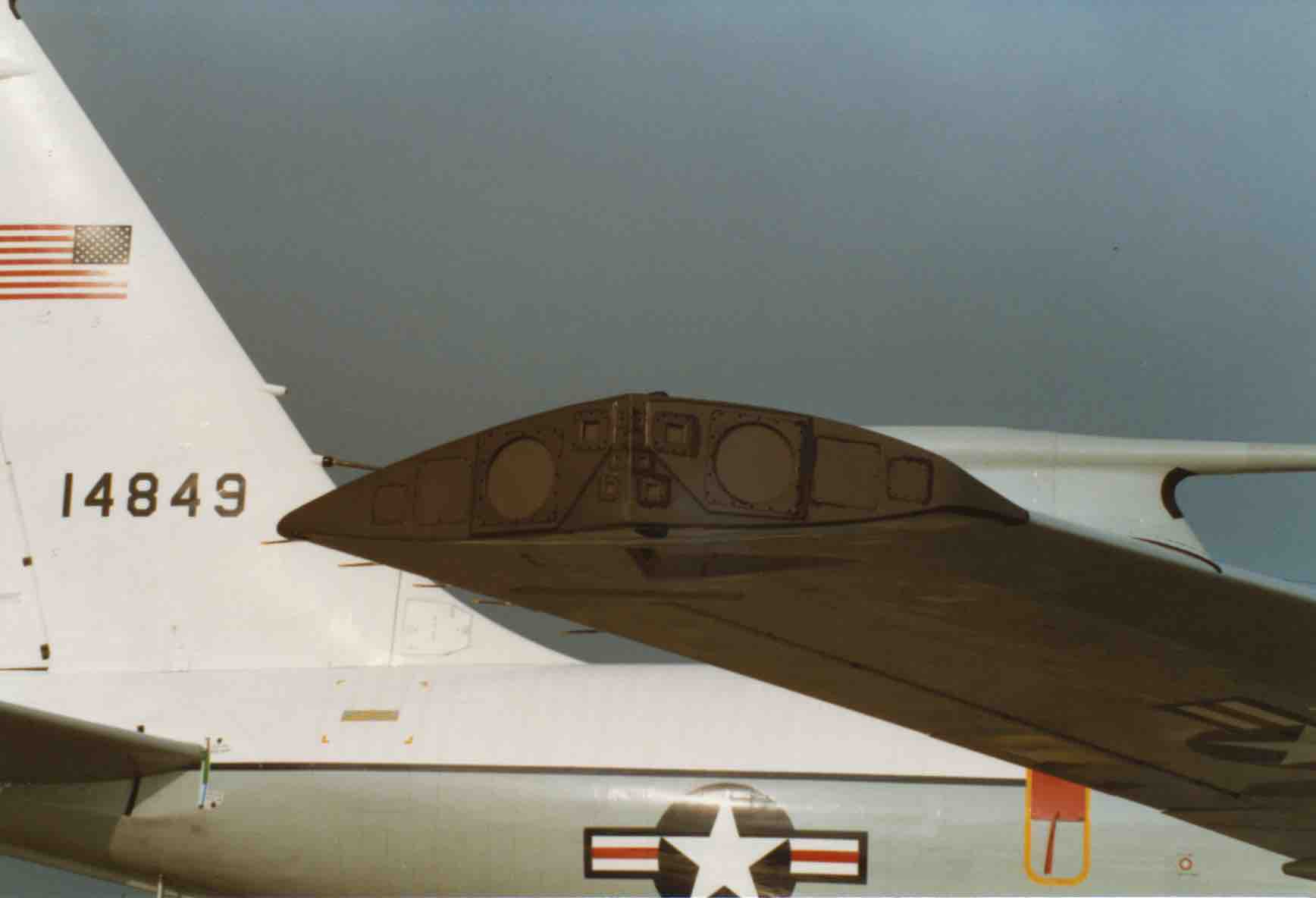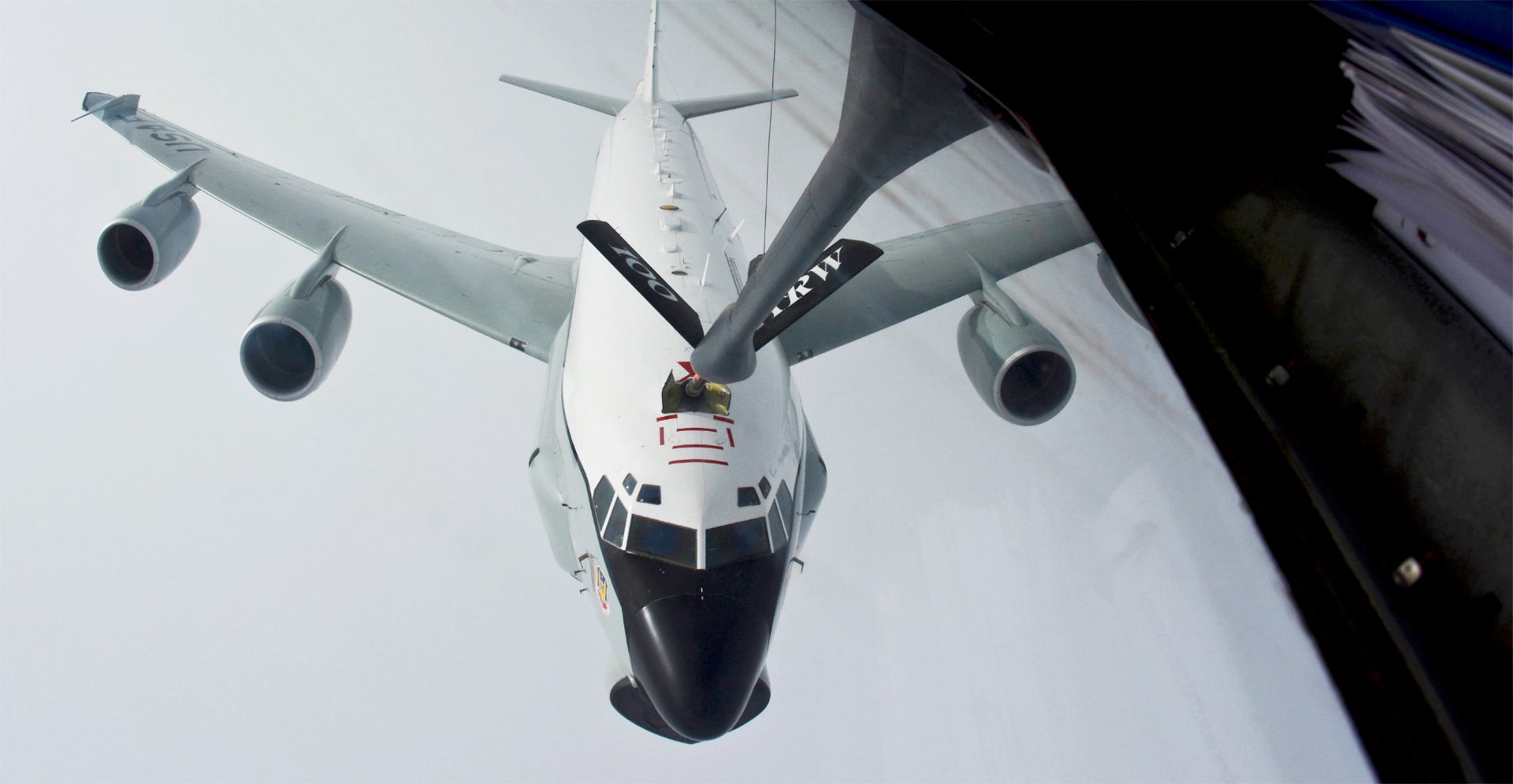A U.S. Air Force RC-135U Combat Sent electronic intelligence aircraft flew a mission over the Strait of Taiwan this morning, supposedly approaching nearly 25 nautical miles from the coast of mainland China. The Beijing-based SCS Probing Initiative claims that today’s flight came closer to the Chinese coast than any other previously recorded, based on publicly available data, but the story may not be so straightforward.
The RC-135U, serial number 64-14849, which was visible using online flight-tracking websites under the transponder code AE01D5, had been preceded by a U.S. Navy P-8A Poseidon maritime patrol aircraft and an EP-3E Aries II intelligence-gathering plane operating in the South China Sea, all in the course of March 22, the SCS Probing Initiative noted in a Tweet.

The RC-135U, of which the Air Force has just two, is specifically configured to gather electronic and signals intelligence, with a particular focus on collecting data regarding adversaries’ radars and air defense networking nodes. These aircraft collect information about electronic signatures to help commanders build so-called “electronic orders of battle” detailing the disposition of an opponent’s air defenses. This includes detecting and classifying threat emitters, and pinpointing their locations, among other electronic intelligence-gathering capabilities.
The reported flightpath is a fairly familiar one, routing through the strategic Bashi Channel, which runs from the southern end of Taiwan to the northern tip of the island of Luzon in the Philippines. The spy plane then apparently headed directly toward the Chinese coast, in the airspace close to the border between the provinces of Fujian in the north, and Guangdong to the south. The aircraft then seems to have turned away, headed back to Kadena Air Base, in Okinawa, Japan.
This has all the traits of a typical Cold War-style reconnaissance maneuver, stimulating radar emitters of interest to “light up” so that onboard analysts can gather critical data before the aircraft leaves the scene. U.S. surveillance flights in the wider South China Sea area are a regular occurrence, of course, with an abundance of potential items of interest for their sensors to analyze.
What made this RC-135U flight so notable, according to the SCS Probing Initiative, which is hosted by Peking University in Beijing and is one of the most active entities tracking American military aviation activity, was its proximity to the People’s Republic. The same source stated that the closest the RC-135U got to the Chinese coast was 25.33 nautical miles. However, U.S. military surveillance aircraft are generally permitted to fly a minimum distance of 20 nautical miles from the coast, although a 40-nautical-mile limit is often used by planners to ensure there is no possibility of a radar misidentifying the exact location of the jet, potentially sparking an international incident.



That last point raises another possible problem with the analysis, based on its accuracy — or lack of it. Flight-tracking available in the public domain is inherently imprecise, meaning that using it for calculations of this kind is not of definitive value. Whether the aircraft actually remained well outside the 20-nautical-mile zone or even encroached it, cannot be determined from this kind of data alone. A more reliable source would be required to confirm the exact flight path, such as radar plots, like those released by the Japanese Ministry of Defense during incursions of their airspace.
Representatives from our favorite open-source flight data website ADS-B Exchange told The War Zone that the information presented by the SCS Probing Initiative likely came from multilateration data, or MLAT, in which there are “tons of variables depending on [radio frequency] propagation.” Using this method, it would be hard to determine the position of the RC-135U with any certainty, suffice to say it was broadly in this area. MLAT, the representatives explained, is a “mathematical calculation based on the time different receivers in the area get the signal, kind of like triangulation. But tons of factors can affect it and the fewer receivers in the area the less accurate it is.” This becomes abundantly clear when you notice how the track jumps around while the Combat Sent likely flew in a straight line.
While today’s RC-135U flight could appear provocative, and, as the Tweet below shows, some observers took it to mean as such, the available flight-tracking data from publicly available sources is not enough to go on. Furthermore, the information that it does provide actually seems to reflect a continuation of established practices and patterns flown by U.S. spy planes in international waters ever since the Cold War. Any wider significance comes from the status of the Taiwan Strait, which has played host to tensions between China and the United States, as well as between China and Taiwan.
For its part, China has been increasingly flexing its military muscles in this hotly disputed region since the beginning of the year, sending fighter jets, maritime patrol, and surveillance types into Taiwan’s Air Defense Identification Zone, or ADIZ at the northern end of the South China Sea. For its part, Taiwan has been busy beefing up its military assets standing guard over the strait, including upgraded F-16 fighter jets, ready to intercept potential threats to the island, and cruise-missile-toting warplanes that would be tasked with defending against a possible Chinese amphibious invasion force.
What we can say with some certainty, is that it looks as though the U.S. Air Force RC-135U made a run at the Chinese mainland, which is an established air defense stimulation tactic, but exactly how close this one got to the coast cannot be precisely established with the information we have to hand. If this becomes part of a new pattern of operations, we may be able to better define it as a change from the status quo, but for not, we will just have to wait and see.
Contact the author: thomas@thedrive.com
